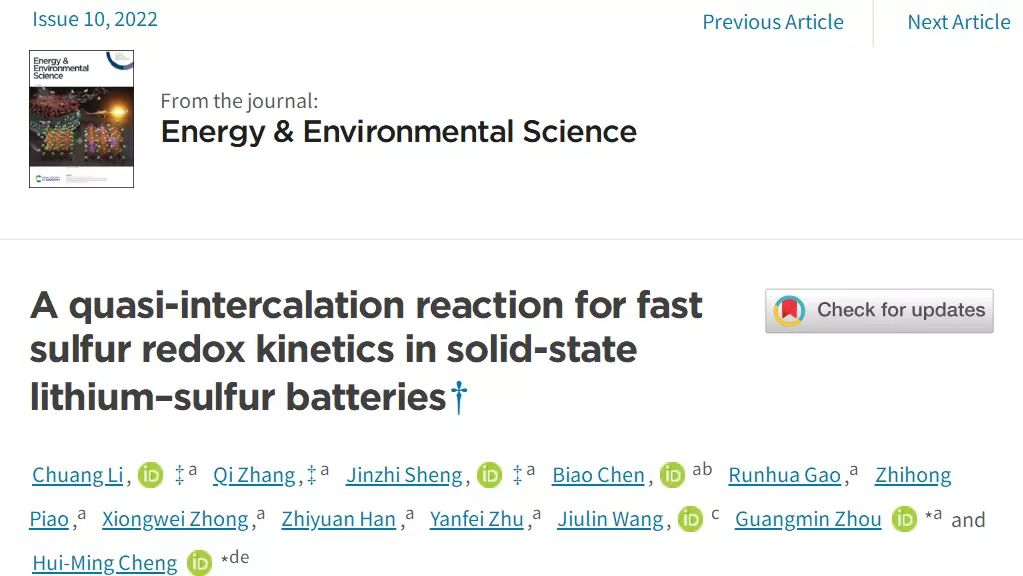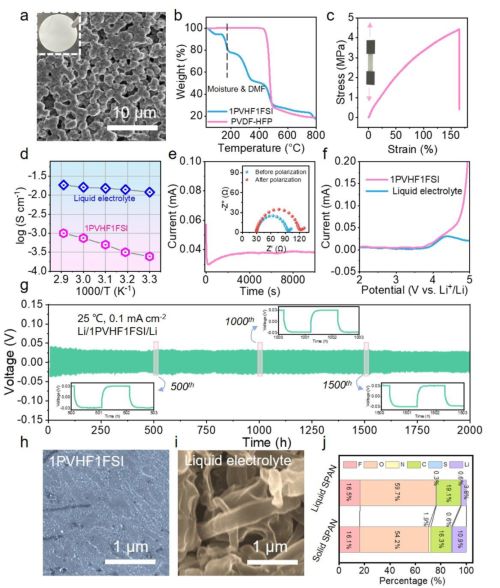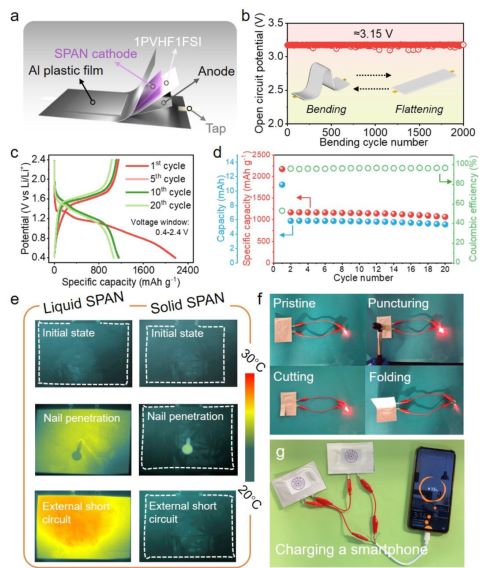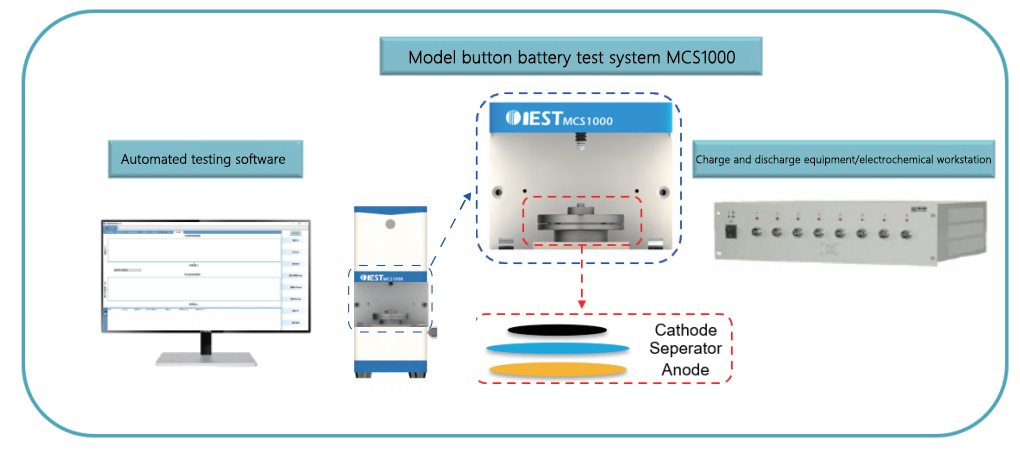In-Situ Cell Swelling Analyzer Mechanism Analysis of Lithium-sulfur Batteries
In-Situ Cell Swelling Analyzer Mechanism Analysis of Lithium-sulfur Batteries

Author Information and Article Abstracts
In 2022, Dr. Li Chuang of the Shenzhen Research Institute of Tsinghua University developed a solid-state lithium-sulfided polyacrylonitrile (Li-SPAN) battery with a salt-in-polymer electrolyte. In this structure, the sulfur is immobilized in the polyacrylonitrile substrate during cycling, preventing the formation of Li2S, which enables it to exhibit faster redox kinetics and smaller performance than conventional solid-state lithium-sulfur battery systems volume change. This article is the first report to improve the redox kinetics of solid-state Li-SPAN batteries by changing the strength of the C-S bond rather than using catalysts, opening up new opportunities for designing higher-performance solid-state Li-sulfur batteries in the future.
Test Plan
1. Material Preparation: 1PVHF1FSI solid electrolyte, solid SPAN positive electrode.
2. Electrochemical Test: The ionic conductivity of the electrolyte was tested by EIS, 2032 type Li-SPAN buckling and pouch cells were prepared, and the volume of SPAN and lithium negative electrode was tested by in-situ thickness swelling measuring device MCS1000 (IEST).
3. Material Characterization: SEM, XPS, Raman, NMR.
Result Analysis

Figure 1. Performance characterization of solid electrolyte membrane 1PVHF1FSI in Li-SPAN batteries
The authors characterized the performance of the solid electrolyte membrane 1PVHF1FSI in Li-SPAN batteries in various aspects, and found that it has continuous porous channels, which can provide a good ion conduction path, and its mechanical properties can better inhibit the formation of lithium metal dendrites. grow. The storage mechanism of lithium ions in the solid-state Li-SPAN battery with 1PVHF1FSI as the matrix is different from that in the liquid Li-SPAN battery. The subsequent authors analyzed the polarization voltage, CV curve, cycle capacity and rate performance of the three electrode materials. The characterization further clarifies that solid-state SPAN has better cycling stability and rate capability due to high redox kinetics and low volume change.

Figure 2. Analysis of Li storage mechanism in solid-state SPAN
The authors further analyze the storage mechanism of lithium-ion in solid-state SPAN by in-situ Raman and in-situ swelling thickness testing devices. It was found that in solid-state SPAN, as lithium ions are stored in solid-state SPAN, the S-S bond is broken to form a Li₄S₂-PAN structure. This process is like the insertion reaction of lithium intercalation, so the authors call this mechanism quasi-intercalation. reaction.

Figure 3. Performance characterization of solid-state SPAN pouch battery
After analyzing the reaction mechanism, the authors assembled solid-state and liquid SPAN pouch batteries to characterize their cycle stability and bending performance. It was found that the solid-state SPAN battery has better flexibility, the capacity retention rate is comparable to the buckling performance, and the thermal stability of the electrolyte is also very good. Good, can withstand the effects of short circuits or needle sticks. In practical applications, it can also charge smartphones.
Summarize
In this paper, a solid-state Li-SPAN battery with a salt-in-polymer polymer electrolyte was developed. In this structure, S is immobilized in the PAN substrate during cycling, preventing the formation of Li2S, thus enabling it to exhibit faster redox kinetics and less volume than conventional solid-state Li-S battery systems in terms of performance Variety. This work provides a new idea for improving the sulfur redox kinetics of solid-state Li-S batteries.
Recommended Test Equipment
MCS Series Model Buckling In-situ Swelling Testing System

